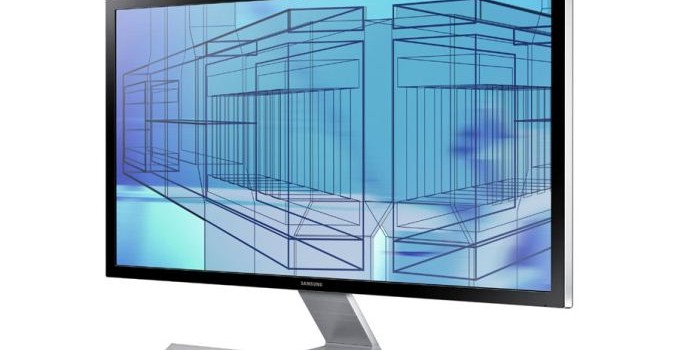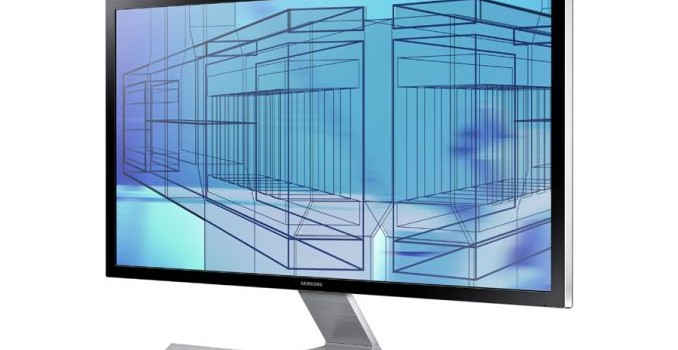_575px.JPG)
We met with AMD and among other things, one item they wanted to show us was the essentially final versions of several upcoming FreeSync displays. Overall AMD and their partners are still on target to launch FreeSync displays this quarter, with AMD telling us that as many as 11 displays could hit the market before the end of March. For CES AMD had several displays running, including a 28” 60Hz 4K display from Samsung, a 27” 144Hz QHD display from BenQ, and a 75Hz 2560×1080 34” display from LG. The three displays mentioned were all running on different GPUs, including an R9 285 for the BenQ, R9 290X for the Samsung display, and an A10-7850K APU was powering the LG UltraWide display.
More important than the displays and hardware powering them is the fact that FreeSync worked just as you’d expect. AMD had serveral demos running, including a tearing test demo with a large vertical block of red moving across the display, and a greatly enhanced version of their earlier windmill demo. We could then enable/disable FreeSync and V-SYNC, we could set the target rendering speed from 40 to 55 Hz in 5Hz increments, or we could set it to vary (sweep) over time between 40 Hz and 55 Hz. The Samsung display meanwhile was even able to show the current refresh rate in its OSD, and with FreeSync enabled we could watch the fluctuations, as can be seen here. [Update: Video of demo has been added below.]
Having seen and used G-SYNC, there was nothing particularly new being demonstrated here, but it is proof that AMD’s FreeSync solution is ready and delivering on all of AMD’s feature goals, and it should be available in the next few months. Meanwhile AMD also took a moment to briefly address the issue of minimum framerates and pixel decay over time, stating that the minimum refresh rate each monitor supports will be on a per-monitor basis, and that it will depend on how quickly pixels decay. The most common outcome is that some displays will have a minimum refresh rate of 30Hz (33.3ms) and others with pixels quicker to decay will have a 40Hz (25ms) minimum.
On the retail front, what remains to be seen now is just how much more FreeSync displays will cost on average compared to non-FreeSync displays. FreeSync is royalty free, but that doesn’t mean that there are not additional costs involved with creating a display that works with FreeSync. There’s a need for better panels and other components which will obviously increase the BoM (Bill of Materials), which will be passed on to the consumers.
Perhaps the bigger question though will be how much FreeSync displays end up costing compared to G-SYNC equivalents, as well as whether Intel and others will support the standard. Meanwhile if FreeSync does gain traction, it will also be interesting to see if NVIDIA begins supporting FreeSync, or if they will remain committed to G-SYNC. Anyway, we should start to see shipping hardware in the near future, and we’ll get answers to many of the remaining questions over the coming year.





_575px.JPG)
_thumb.JPG)
_thumb.JPG)
_thumb.JPG)
